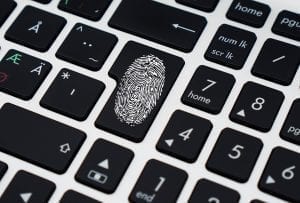As entertaining as these shows are, though, they tend to spread a lot of misinformation about the nature of crime scene investigations and how the criminal justice system in the country works.
It’s easy to get hooked on crime TV shows. The thrill, the mystery, the drama, and the immersive plot will keep you on the edge of your seat for the next hour or so.
As entertaining as these shows are, though, they tend to spread a lot of misinformation about the nature of crime scene investigations and how the criminal justice system in the country works. This can lead to a lot of confusion among people who are arrested for criminal offenses or facing criminal damage charges in their real lives.
It’s critical for individuals dealing with a criminal charge to avoid believing these misconceptions propagated by the media. Today, we’re setting the record straight on six of the most common criminal justice system myths on TV.
Myth #1: Crime scene evidence is processed quickly.
One criminal justice myth made popular by TV shows is the speed at which crime scene evidence is processed. If you’ve followed at least one crime series, you may have noticed and probably raised an eyebrow at how law enforcement officers often get fingerprints and DNA results back just mere hours after sending the samples to the lab.
In reality, crime scene evidence takes days, weeks, and even months to process. This may be due to the number of cases forensic scientists are working on, the backlogs in the lab, or the quality of the evidence submitted.
Though the FBI’s CODIS database contains the world’s largest repository of DNA records, there are cases where a suspect’s fingerprints/DNA have not yet been stored in the system or are highly degraded/poorly preserved – and, thus, cannot be identified.
Myth #2: Cases are wrapped up fast.
In connection to myth #1, another great misconception propagated by crime shows is, basically, how long (or short) everything takes.
Building a case is often a painfully slow process and relies on more than just forensic evidence. Aside from the time-consuming lab work, the FBI also needs to investigate the crime scene, find and interview witnesses, and prepare their case. All these will take time, let alone the conviction process.
Outside the realms of crime TV, cases usually take months or sometimes decades to solve – if they’re solved at all.
Myth #3: Fingerprint and DNA evidence can solve everything.
Isn’t it odd how detectives always seem to find a strand of hair or fingerprints at the crime scene, which turns out to be key to eventually solving the case.
While it’s true that DNA can be extremely powerful evidence, contrary to what Hollywood may have led audiences to believe, there aren’t as many real-world cases solved using DNA or fingerprints.

First of all, it’s nearly impossible to find clean DNA evidence in the crime scene or weapon. Clean fingerprints are just as rare. Moreover, you need to already have a sample of the suspect’s DNA to compare the evidence with. Otherwise, it’s worthless.
Myth #4: Detectives process the crime scene AND analyze evidence.
Another thing about criminal television series that bother many professionals in the field is the way they conflate the roles of detectives and forensic scientists. It’s not unusual to see detectives examining evidence with a forensic scientist or crime scene personnel doing investigative work in many of these shows. In reality, however, these are two different and separate functions.
Crime scene technicians are only involved in collecting and analyzing evidence, while investigators hardly set foot in the lab. Also, investigation teams handle multiple cases simultaneously. They don’t just focus on one case at a time.
Myth #5: You only get one phone call in jail.
It’s a recurring scene in many crime shows: either the police tell the person arrested that they’ve got one phone call or the person under arrest demands for his/her one phone call in jail. Whichever way, this situation is purely a Hollywood invention.
You won’t have to contemplate between calling your spouse, your parents, or an experienced criminal defense attorney if you ever get arrested because you’re allowed to make more than one phone call from jail. That being said, the phone calls themselves are not a constitutionally protected right – they’re a privilege. The authorities can refuse to let you make more calls if you don’t cooperate with them or behave poorly during custody.
Myth #6: The police must read you your Miranda Rights upon arrest.
The popularity of crime TV shows have led a lot of people to believe that the police must read them their Miranda Rights during the arrest. If the arresting officer fails to do so, the case can be dismissed for violation of police protocol. This is a false notion.
It’s true that police officers have to inform persons under arrest of their right to remain silent and the right to an attorney. However, they don’t necessarily have to read you these rights immediately.
Miranda v. Arizona established that you have to be informed of these rights prior to being questioned about the offense. Even if the police forget to read your Miranda Rights, it’s not enough to have the case dismissed. It only makes any evidence they obtained inadmissible in court.
Whether you’re read your Miranda Rights or not, it’s in your best interest to refuse to answer their questions without your attorney present.


Join the conversation!